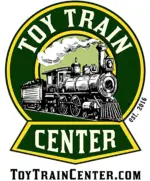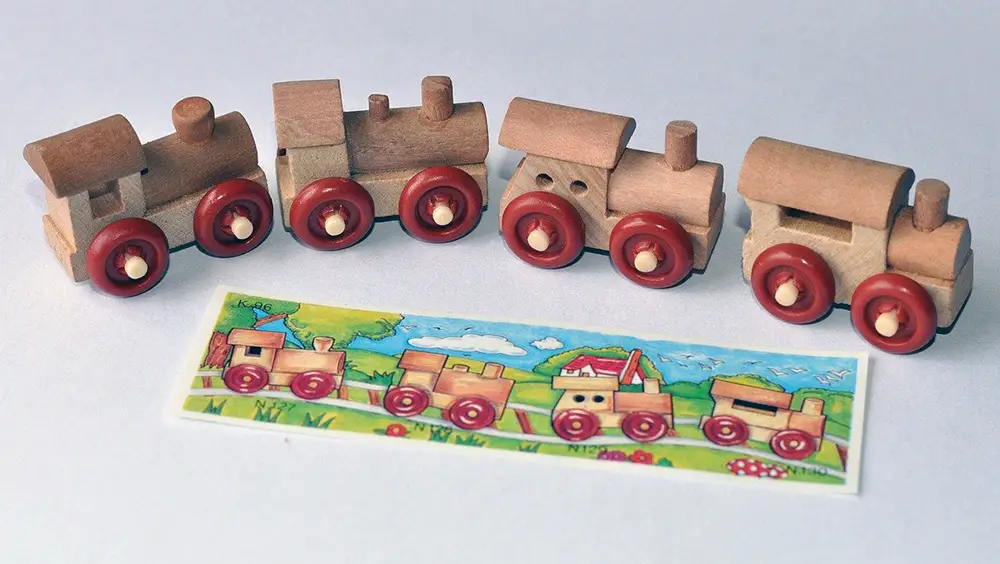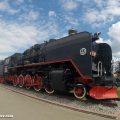Although at first glance it may look like just playing to you, your child is learning new skills and growing as a person even when they are engaged in play. Time playing with toys at a young age is of a much higher benefit than many people realize, and toy trains are no different. They can be one of the best choices for your child to develop a whole array of new skills.
Whether you’re looking for help with developing critical thinking skills or creativity, toy trains have it all.
Here are the top 10 educational benefits of toy trains:
#10 Pretend Play
Although it may not immediately strike you as one of the most important things in child development, pretend play can have a crucial role as your child grows up. Learning to pretend, expressing thoughts and ideas about the game they are playing can help develop an understanding of the role language plays in the real world. Pretending to act out and reenact made up scenarios is critical for a child’s early development.
#9 Problem Solving
Assembling train sets can be even more beneficial than playing with them. By allowing your child to assemble the train set (where possible) themselves, they can gain the problem-solving skills needed for later in life. Piecing together a toy train set may seem like easy work for you and me, but for a child, it can require a much deeper thought process than they are perhaps otherwise used to. Learning which pieces fit where and internalizing that information and then applying it to building the same set next time, is very a very beneficial skill for them to learn.
#8 Learning sequences
This one again ties to assembly. When building the train set and coupling engines and carriages together, sequences can play a big part. Many sets must be assembled in a specific order and may be labeled with letters or numbers to indicate that order. Teaching your child to follow that order and learn number and letter sequencing can give your child a leg up during earlier years at school.
#7 Self-play
One of the first things young children learn is self-play. Being able to entertain themselves without outside input can help nurture their self-reliance and creativity. Self-play is one of the first steps to small amounts of independence that children must learn to develop. Being able to set up their toy train sets, play with them, and then put them away is a big deal for a young child and can be at time a great relief for parents.
#6 Self-management
Similarly to self-play, self-management can be a huge benefit of playing with toy trains. Being able to make decisions about what and how they are playing can be very good for communication with others but its biggest benefit is aiding with internal thoughts. Being able to self manage their actions and their feelings and how they affect each other can be an eye-opener for your child. Self-management alongside self-play can eventually make children happier, more content, and overall more understanding.
#5 Social skills
Playing with trains isn’t always a solo adventure. Toy trains are something your child can play with together with you the parent, older or younger siblings, friends or other family members. While playing with others your child will need to develop good social skills. Being able to understand and accept other people’s input, or understand the processes of sharing can be a big personal benefit for children.
Being able to communicate feelings and ideas is a big part of forming social skills, but very often it is non-verbal social skills that have a major impact too. Children are inherently selfish, and it’s not their fault, that’s just how they start life. Children must develop consideration for others, and typically between ages 2 and 5 is where the largest part of this development takes place. Sharing turns, sharing trains, sharing ideas of how to set up the play area can offer your child great opportunities to develop a sociable personality. Many parents hope that these skill will come naturally over time, but playing with toy trains give your child a big boost.
 Image by Nathan Legakis from Pixabay
Image by Nathan Legakis from Pixabay
#4 Instructions
Whether it is giving or receiving, instructions are a big part of everyday life and this is no different for children. In the early years of a child’s development learning how to take instructions and act appropriately plays a crucial role. Learning how to take instructions from teachers at school and behave correctly can play a big part in your child’s early school days. We all remember that child in our class who just would not behave properly, no matter how many times the teacher asked them to, and that is the opposite of what you are hoping for as a parent.
Giving instructions can be as important as receiving them and is a valuable skill all on its own. Your child’s ability to communicate instructions to you, “Pass me that black locomotive. Please.”, “Can you close the bridge?”, or “Stop the train at the train crossing!” are just a few examples of interactions your children can have while playing with toy trains. These can make an important part of how children learn to express their thoughts, wants, and feelings correctly.
#3 Fine motor skills
Developing fine motor skills is an important skill to learn. Being able to assemble train sets, build tracks and place other decorative pieces can offer plenty of practice for these motor skills. Being able to consistently place the trains on the tracks with ease may seem incredibly simple to you, as it should, but it is still something that a four year of child needs practice with. Children are not born with excellent fine motor skills! These must be learned and practiced over time with enough room for trial and error. Toy trains provide these conditions perfectly.
#2 Creativity
Not all train sets have layouts set in stone, nor are their trains limited to one order of carriages or one direction on the tracks. Being able to pick and choose new and interesting layouts and games whilst playing with toy trains can be a wonderful opportunity to nurture your child’s creative thinking. Young children love repetition, they enjoy watching the same shows over and over, and playing the same games over and over. Trains whilst offering similar circumstance also offers the opportunity for huge variation. Giving your child the ability to create their own layout of tracks and trains is a great opportunity to express their own personal creativity, whilst at the same time sticking to the comfortable and familiar.
#1 Expanding their interest
Playing with trains and their interest in trains is not limited to the game. Nurturing an interest in toy trains can help your child learn how their interests branch out. A good example is “Thomas the Tank Engine”. This wildly popular book is a clear link for a child between the game they love (playing with trains) and the rest of the world. Children are very good at compartmentalizing, and almost every activity to them is unrelated. Eventually, they learn that some situations are related.
“Time to brush teeth equals time for bed” is a very common early example. Learning that there can be links between playtime during the day and story time during the evening before bed can open a child’s eyes to a whole other level of thinking. Being able to discern the relationships between different parts of their day is a big developmental step for young kids.
It’s very clear that playing, especially with toy trains, can offer a huge array of developmental benefits to young children. They can learn new ways to express their creativity, thoughts, and feelings. They can learn how to internalize and behave accordingly when receiving other people’s input. It can also even improve their hand-eye coordination and fine motor skills, giving them better control over themselves and their surroundings.





